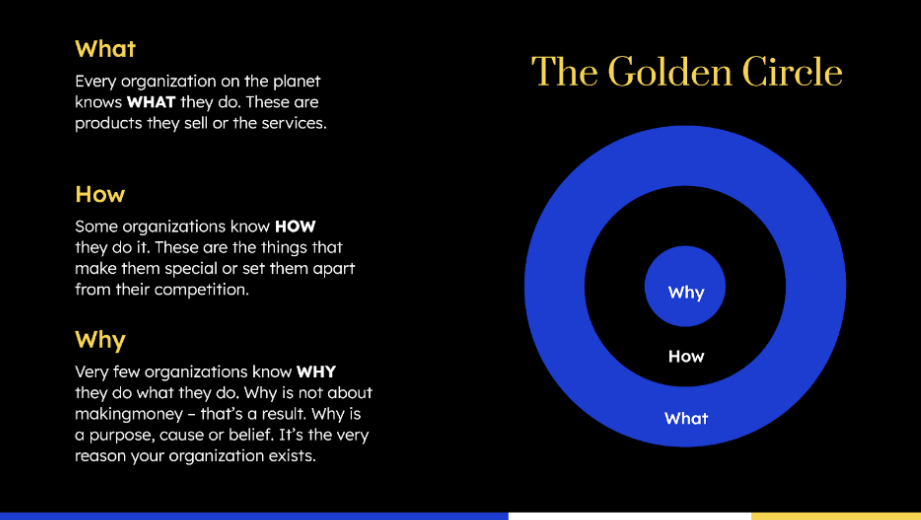Search Engine Optimization
During my professional career, IŌĆÖve always enjoyed getting book recommendations from people within my community and network. At Grit, we write a ton of best lists or top ten related content, but this article is not intended to be that. This is simply a list of five books that IŌĆÖve read fairly recently that I love pulling nuggets of knowledge from to share with my team on a regular basis.
My hope is that at very least, this short list provides you with one book that you want to read or re-read in the near future. Part of what I like about this list is a clear variety of ways to enter into the topic of marketing. So, here goes nothing, letŌĆÖs dig into my current list of of my favorite books on marketing.
- Start with Why
- 22 Immutable Laws of Marketing
- Contagious: Why Things Catch On
- Insanely Simple
- Building a Storybrand
1. Start with Why
If you read one of my recent posts on 7 keys to being a great marketing leader, you would have gotten a sneak peek at my love for the book ŌĆ£Start with WhyŌĆØ by Simon Sinek, but allow me to share one of my favorite highlights from reading this book.
It makes you think philosophically
If you know me at all personally, it isnŌĆÖt surprising that IŌĆÖd put this into a pro column for reasons to read SinekŌĆÖs book, but IŌĆÖd argue that any book that makes you zoom out and think more deeply about human behavior as a whole is worth paying attention to.
ŌĆ£Start with WhyŌĆØ introduces a simple framework that Sinek calls ŌĆ£The Golden Circle.ŌĆØ

One of my favorite conversation starters that stemmed from The Golden Circle is this concept that if you convince someone to do something (i.e. buy your product/service, be your friend, take an action, etc.), and they did it for any reason outside of connecting to your why ŌĆö it was a manipulation. Now, I love this because manipulation is such a reaction evoking word to use. IŌĆÖve never met anyone who A) likes being manipulated or B) would admit to being a manipulator. Anytime you find a hot button topic, I think it presents an opportunity to think deeper, and often leads to some of the more important growth that we have as people.
A great example of a brand that I connect with on a ŌĆ£whyŌĆØ level is Chick-Fil-A. Again, not a surprise to those who know me, but outside of loving their spicy chicken strips and waffle fries, I really believe in the culture and leadership behind CFA. Something that I find kind of cool to think about is that their menu doesnŌĆÖt really feature the ŌĆ£dollar menuŌĆØ or ŌĆ£cheap itemsŌĆØ section like many other fast food or quick service restaurants. CFA has made such a deep connection with its core customer base that there is no price manipulation needed to get people to come back ŌĆö they believe in the purpose of CFA. And whether conscious or unconscious, like me, they continue to ŌĆ£eat mor chikin.ŌĆØ
So, if you havenŌĆÖt read this book yet, I highly encourage you to check it out. Its also a precursor for SinekŌĆÖs more recent book, ŌĆ£The Infinite Game,ŌĆØ┬Ā which is amazing as well, but IŌĆÖll avoid making this a six-book list and move on from Simon Sinek for now!
2. 22 Immutable Laws of Marketing
This book came as a recommendation from my dad, and admittedly I was skeptical at first. This book was written in 1956 and naturally/sadly, I doubted how well it would translate into my world of digital marketing today. Man was I wrong.
I talked about this book quite a bit in another recent post ŌĆ£Marketing Strategy Defined,ŌĆØ but thought it was worth calling out again in this list of five books IŌĆÖm loving right now. This book is an absolute must if you want to grow as a marketing leader and really highlights the fundamentals that shape all marketing ŌĆö whether itŌĆÖs digital, print, guerilla, or anything in between.
Zero fluff and all substance
Admittedly, I often find that many of the 300 page business books that I read, even the good ones, itŌĆÖs difficult to finish the final 50 pages due to the feeling that they get repetitive. ReisŌĆÖ book is quite the opposite. It literally is ŌĆ£immutableŌĆØ in my opinion. The chapters (laws) connect and build upon one another in a way that continues to open your mind to key marketing concepts that frankly go ignored too often.
Sticking with the theme of quotes that I like to use as conversation starters, in order to emphasize his ŌĆ£Law of the Category,ŌĆØ Reis asks the question to his readers, ŌĆ£Who was first person to fly across the Atlantic?ŌĆØ A number of people are able to answer with Lindburg. He then asks who the second was ŌĆö almost nobody knows ŌĆö despite the fact that the second person made the flight in half the time. Most people, however, are able to guess the third person to make the flight, Amelia Erhardt, who was the first woman to fly across the Atlantic.
Point being that itŌĆÖs better to be first, then it is to be better. If you canŌĆÖt be first in a category, then create a new category ŌĆö like Amelia. Thinking is present day, IŌĆÖve talked to plenty of people who would say that Lyft is better than Uber, but when people are speaking in generalities about ride sharing apps, almost everyone would say they take an Uber. Uber was first, and regardless of if they are better or not, people will forever have a tendency to call all ride share apps Uber ŌĆö proving ReisŌĆÖ point in the Law of the Category.
This is just one of the 22 laws, so if this was at all interesting to you, IŌĆÖd encourage you to check it out. On the positive side, it is also a pretty short book, so you can crank through and then keep it laying around to reference back to as almost a guidebook of sorts.
3. Contagious: Why Brands Catch On
I stumbled upon this book a few years back when my team was working on a few campaign related projects ŌĆö strategizing on how to help launch some new products into competitive markets, such as insurance. This begged the question, why do some brands catch on and not others? ŌĆö which naturally led me to snagging Jonah BurgerŌĆÖs book ŌĆ£ContagiousŌĆØ which was perfectly subtitled to grab my attention!
Quantifying the unquantifiable
Often times when trying to understand why Apple become Apple, while Dell didnŌĆÖt, is hard. While maybe the Apple example is more obvious now, the point is ŌĆö when sitting down to dream up the next big campaign ŌĆö it feels daunting to try to establish why one idea will catch on vs. another.
While this isnŌĆÖt entirely a wild goose chase, ad agencies have been solving this challenge for decades. I think JonahŌĆÖs book has a unique approach to boiling it down to 5 key principles that define why things catch on.
IŌĆÖll highlight one for you today, which is social currency. I love the simplicity yet brilliance of this principle. As humans, one of the most rewarding feelings is to provide a friend, family member, or colleague a recommendation that leads to them having a great time. When this happens, Berger points out that this is a form of social currency where you are rewarded for your recommendation by ŌĆ£going up in their bookŌĆØ as we like to say. When your brand, campaign, product, or idea becomes something that people can leverage for social currency, it becomes contagious to share it and you increase the likelihood that it will catch on.
I mentioned Apple in this section, so IŌĆÖll use that to bridge to my fourth recommendation, which is the book ŌĆ£Insanely SimpleŌĆØ that focuses on one creative directorŌĆÖs journey working for Steve Jobs and Apple.
4. Insanely Simple
I honestly canŌĆÖt remember how I stumbled upon this book ŌĆö but I LOVED it. As a brand and advertising geek at heart (I love studying commercials), this book takes its readers on a journey through the life of author Ken Segall as he worked on one of the most iconic brands, Apple, for one of the most unique leaders, Steve Jobs. If youŌĆÖre in the advertising world OR if you love Apple,┬Ā this is a must read.
Small groups of smart people
One of SegallŌĆÖs points that I resonated with was the concept of keeping decisions to small groups of smart people, and trusting those decisions. Simplicity is one of those ŌĆ£ideasŌĆØ that everyone desires, right? We want things to be simple, but as we all know, they rarely ever are.
Jobs was well known for avoiding focus groups and going against the grain in how he lead AppleŌĆÖs marketing and product development efforts. In the book, Segall weaves through continuous comparison of Apple vs. other brands that he worked on, highlighting the stark difference between how decisions were made, Apple of course moving fast and others being stuck in analysis paralysis. If you wrestle with measuring twice and cutting once vs. trusting your gut, this is an awesome read to challenge your thinking and explore examples of how this has played out for some of the most well-known brands today.
When things are getting complicated at Grit, I often find myself asking the question, how do we simplify our ability to make a decision? At these times, I think about two things:
- The concept of leveraging small groups of smart people to make decisions ŌĆö avoiding the inherent complication that comes with bigger groups.
- A lesson from an experienced CEO that I learned which is when trying to move forward, donŌĆÖt ask ŌĆ£Do you agree with this decision?ŌĆØ Instead, ask ŌĆ£Are you comfortable moving forward?ŌĆØ
While I donŌĆÖt think Jobs really cared if people were comfortable moving forward, this book gives a really cool peek inside Apple (and other brands) that highlights the tensions we feel in trying to keep things simple while delivering something magical.
5. Building a Storybrand
Last but not least, Building a Storybrand by Donald Miller might actually be my most quoted book from the last two years. My team uses the Storybrand framework for a bunch of the creative projects that we work on, and IŌĆÖve become a big fan of the Hero and Guide language that Miller uses throughout the book.
This is one of those easy-to-read, great-to-reference books that I think is worthy of sitting on your desk or on a shelf close by.
The customer is the hero
One of the seemingly obvious but most important points that Miller makes in his book is that every story needs a hero, but that far too many brands make themselves or their products the hero, vs. making the customer the hero. The book emphasizes that brands should be the guide that comes alongside the hero to help them unlock their powers.
Examples given are Katniss Everdeen (Hero) and Haymitch (Guide) from ŌĆ£The Hunger GamesŌĆØ or Luke Skywalker (Hero) and Yoda (Guide) in ŌĆ£Star Wars.ŌĆØ These heroes are generally struggling with self-doubt and uncertainty to whether or not they can accomplish their mission, but the trusted guide helps them overcome that fear and reach their full potential.
If you havenŌĆÖt taken a hard look at your messaging in a while, IŌĆÖd encourage you to do so with this framework in mind. Is your customer clearly the hero in your copy? If the answer is no or you arenŌĆÖt sure, then this book could be a great resource to snag and work through this year!
Conclusion
Well, if you made it this far, hopefully that means you have all five books in your Amazon or Audible cart already! Or at very least, I hope you found a nugget or two that made you think.
As always, I would love to hear other thoughts, reactions, or comments about my five favorite books that never get old. Feel free to leave them in the comments below or shoot me an email at alex@thegritgroup.io. IŌĆÖm happy to grab a drink ŌĆö virtual or in person ŌĆö to talk shop about leadership and marketing!












